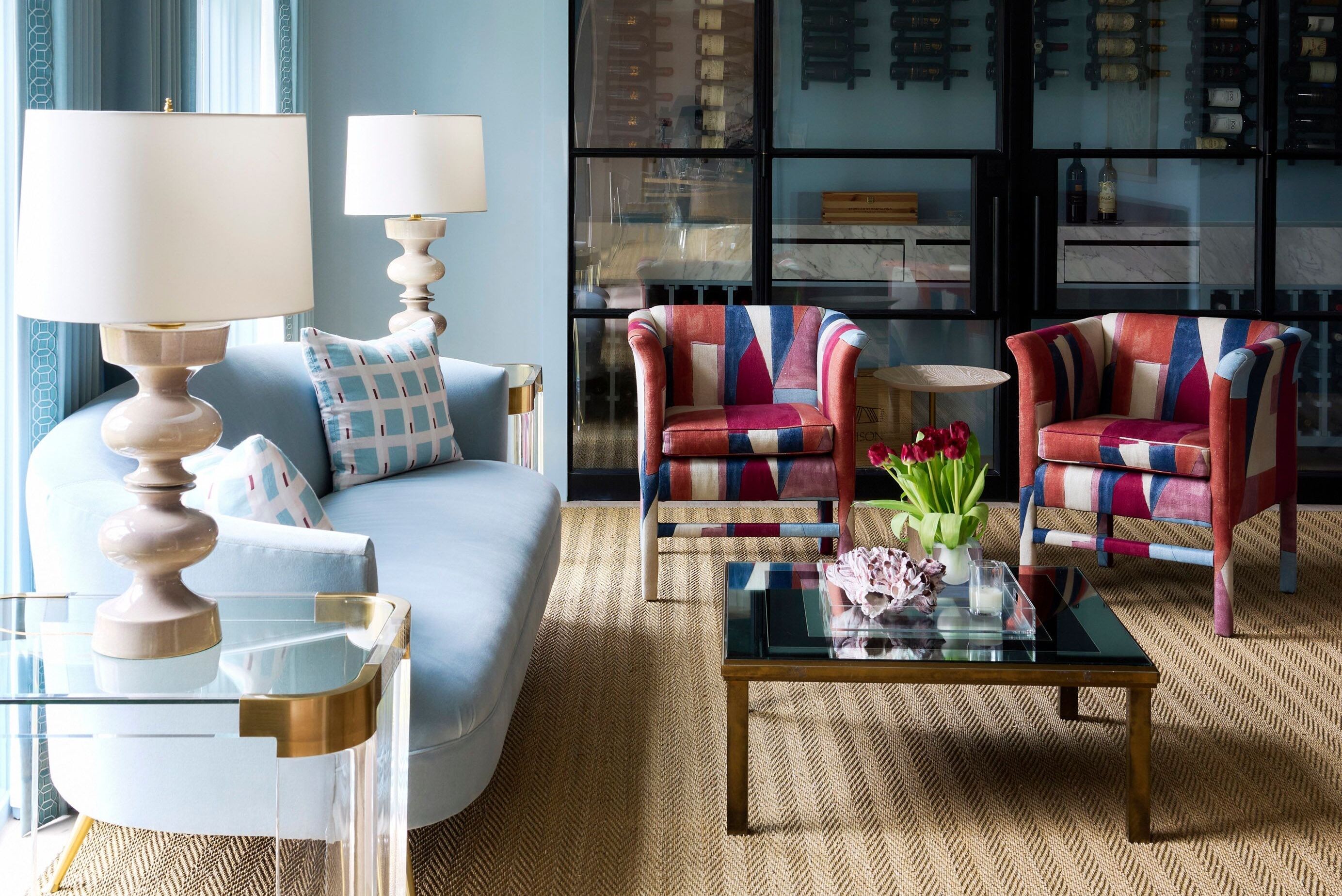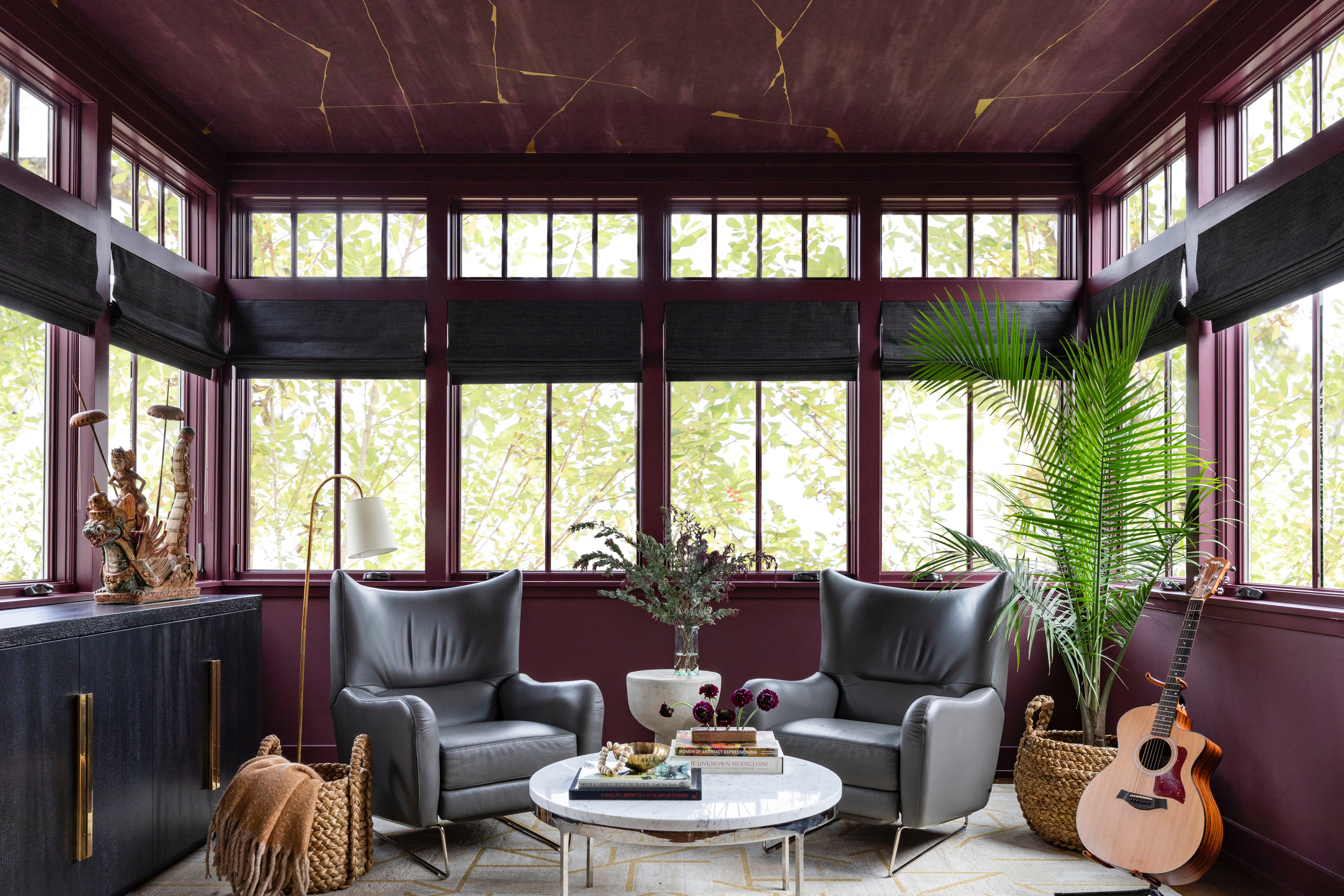Fighting Off Carpet, One Compromise at a Time

Nikou and Travis McCarra built their Fourth Ward home from the ground up.
Image: Max Burkhalter
Nikou and Travis McCarra built their dream house under the kind of threat that haunts young, upwardly mobile designers all over this nation, a looming menace so dire in its implications and frightful in its imagery that it stayed with them throughout the entire process of planning, building, and decorating the adjacent pair of duplexes they were putting up in the Fourth Ward. We speak, of course, of wall-to-wall carpet. “With our budget,” says Nikou, “the contractor was certain we would get to the end and wouldn’t be able to afford any flooring but carpet. And it was very important for us not to have carpet. If we were to mess up on our budget, we’d be walking around on carpet.”
The McCarras met studying architecture at the University of Houston, he as an undergraduate and she as a graduate student, where they found they shared the same aesthetic—minimal, clean, natural. They both finished in 2009, and were married in Marfa last year. In between, they bought two next-door lots in foreclosure, on which they would build two duplexes and live in one of the four apartments.
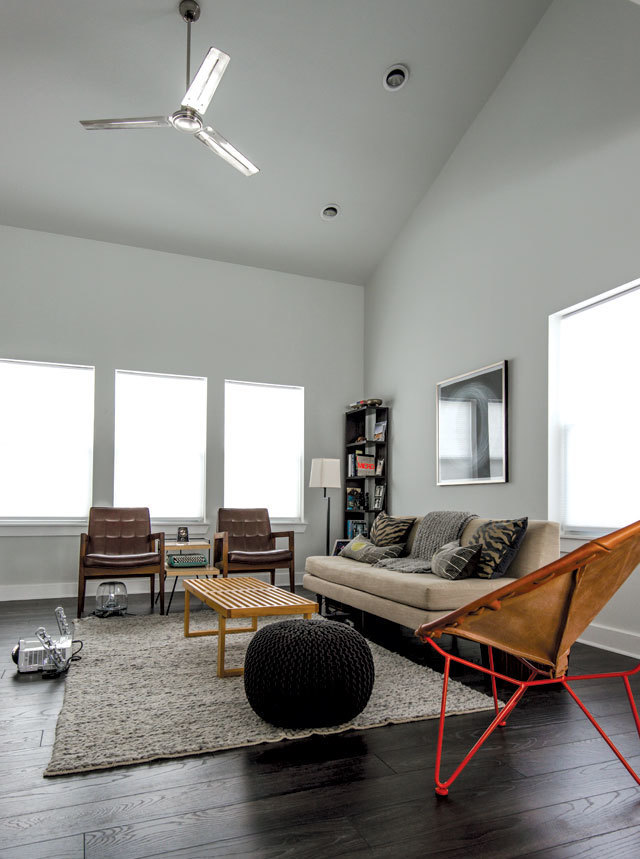
Image: Max Burkhalter
The neighborhood was and is, as they say, in transition. Both properties are around the corner from shuttered, graffiti-ridden shotgun shacks in historic Freedman’s Town, which was founded by freed slaves and is struggling to retain its historic buildings in the face of pressure from developers. During construction, a man calling himself “Notorious B.U.M.” took up residence in the port-a-potty, which he then tagged. Still, the McCarras have never had any real problems, and the value of the property, which is in spitting distance of both Montrose and downtown, will almost certainly rise.
Freedman’s Town is filled with Victorian houses, shotgun shacks, and bungalows, and the couple took inspiration from all of these forms in drawing up plans for two homes of their own. Their original shared vision included some plans now discarded—for a rooftop deck, creative landscaping, bamboo barriers between the homes, eight apartments instead of four. Which is to say that the story of their defying that skeptical contractor’s predictions is, again and again, the story of compromise. The deck would have asked too much of the house’s structure, the kind of bamboo that creates a barrier risks spreading into neighbors’ yards, and the city requires more parking for eight apartments than the McCarras were able to provide. City regulations also required a number of “approved” plants and trees, and grass in place of gravel, which, along with budgetary restrictions, quashed their original idea for the natural environment. They stayed flexible while putting in long hours hunting out cheaply priced materials.
“In architecture school there is a Venn diagram,” says Nikou. “Quality, budget, and time. To have all three of those is difficult. You pick the two that you want. It took more time for us, but we got quality for the budget.”
{page break}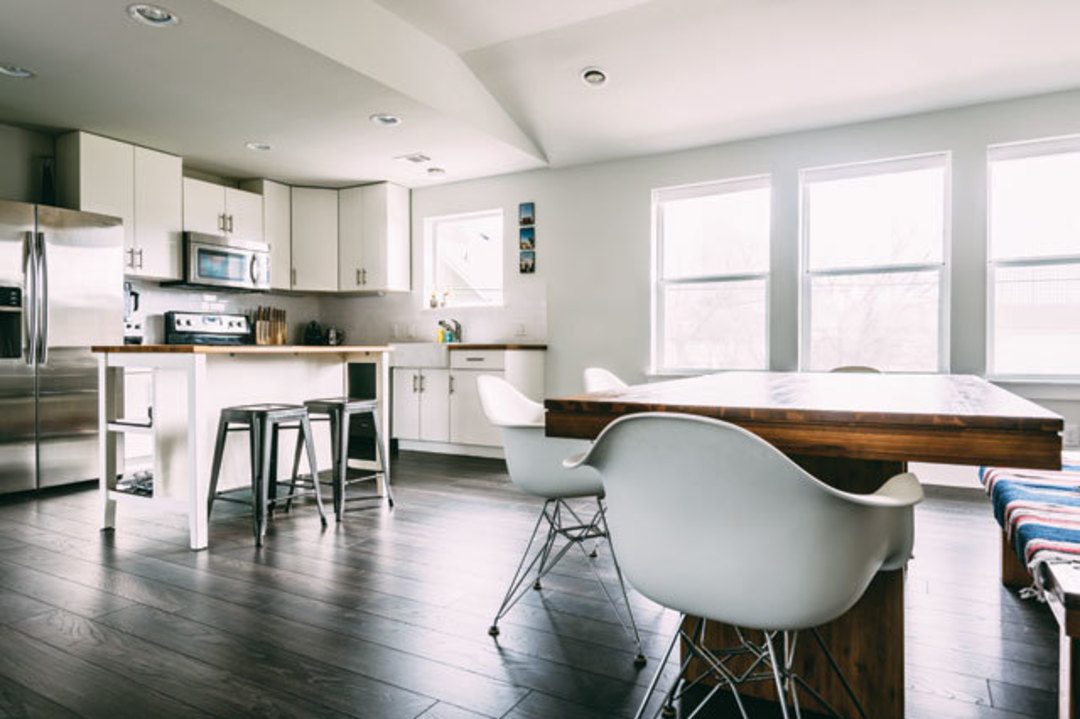
Image: Max Burkhalter
More important than, say, a rooftop deck, was the McCarras’ commitment to a layout that supported the way they wanted to live. “In our last place,” says Nikou, “we were more comfortable in the bedroom than in the main room.” Adds Travis, “It was essentially two small rooms that made the whole place seem small.”
Their last apartment also lacked space for Travis to work, which meant he ran his design company out of the bedroom, and lacked separation between his personal and work lives. The McCarras added a home office on the end of each apartment, as far away as possible from the bedroom. They also wanted plenty of natural light, though the contractors said the couple couldn’t afford the number of windows for which they’d planned.
In their quest to include an abundance of windows and avoid the scourge of a textile-based floor covering, they saved on everything from appliances to glass to doorknobs. They designed the showers such that no glass was necessary; a short tile wall creates a barrier between the shower and rest of the bathroom. They bought floor models of the appliances they wanted and accepted the dings and scratches on their steel Samsung refrigerator, along with a mismatched washer and dryer easily hidden in a closet.
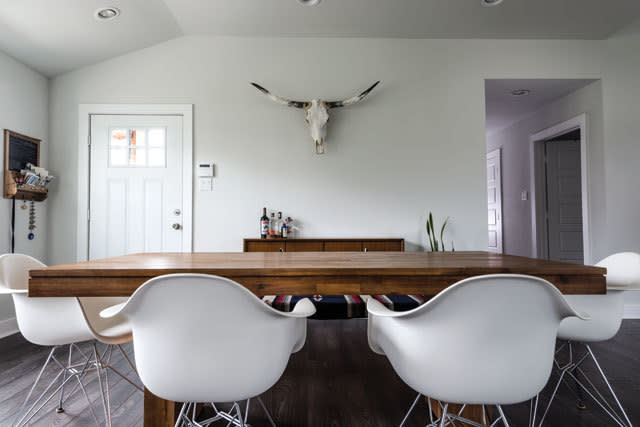
Image: Max Burkhalter
“We waited patiently for Ikea to have their 20 percent off sale,” says Nikou. Adds Travis: “We’ve probably been to their kitchen department 50 times since we started. But if you let other people make decisions for you, it’s always going to be more expensive.”
They found their dining room table, which anchors the common area, on sale at Macy’s and saved thousands. “We went to Design Within Reach looking for a table very similar to this,” Nikou says of the table, “and Travis really liked it, but I said, ‘this price is not within our reach.’” They searched out cheap finishings along Harwin Drive, an experience Nikou describes as “like a scavenger hunt … The only way to make successful purchases in Harwin is to know that they know where the good goods are, and to entice people to tell you where they are.” Small savings elsewhere—using an Ikea butcher block in the kitchen, for instance, and buying cabinet handles in bulk—added up too.
As a result of taking charge of a multitude of decisions the contractor usually would have made, they didn’t have to give in on those design elements of most importance to them, and were able to add finishing touches they like but that aren’t particularly expensive. There is an abundance of natural light streaming into the open common area, a terrace overlooking an herb garden, and a floor-to-ceiling chalkboard in the kitchen on which the McCarras write their shopping lists. Their minimalist aesthetic holds up throughout; nothing divides the kitchen from the living room from the dining area, and where you might expect to see the dull face of a television, there is only space where a projector throws an image when the McCarras bother to turn it on. And, victory: there are no carpets in the McCarras’ apartment, one of four nearly identical spaces in the duplexes they built, though you will find, in the small bedroom they share, a rug made from the hide of a Brazilian cow.
To potential tenants, the two have provided an alternative to aging, cramped fourplexes and brand new, cheaply constructed apartment buildings. They spelled out their vision to anyone interested in renting. “We wanted to make a really unique living experience that’s not anywhere else in Houston,” says Nikou. “We explained that we wanted a community living space but not the typical apartment complex. It’s about having a minimal lifestyle. People wanted neighbors and operable windows.”
The McCarras seem to have created something for which tenants were searching; they easily rented out all three remaining apartments while the insulation was still exposed, within a week of advertising on Craigslist. Today, a year after moving in, both Travis and Nikou claim they’ve moved on, stopped half-hunting for the perfect credenza every time they walk out the door.
“It’s done,” says Nikou.
Asked what they regret, the best Nikou can muster, after a moment’s thought, is this: “I went with Travis’s decision on the orientation of the floor tile in the bathroom, and I think that was a mistake.” She shrugs as she and Travis struggle to find something else to complain about. Travis: “There were so many decisions at the time that seemed like the biggest decisions ever.”
And those skeptical builders? “When our contractors came here they were concerned about their supplies,” says Nikou. “One said he was going to bring his gun with him. Six months later, they’re calling around and trying to buy.”
